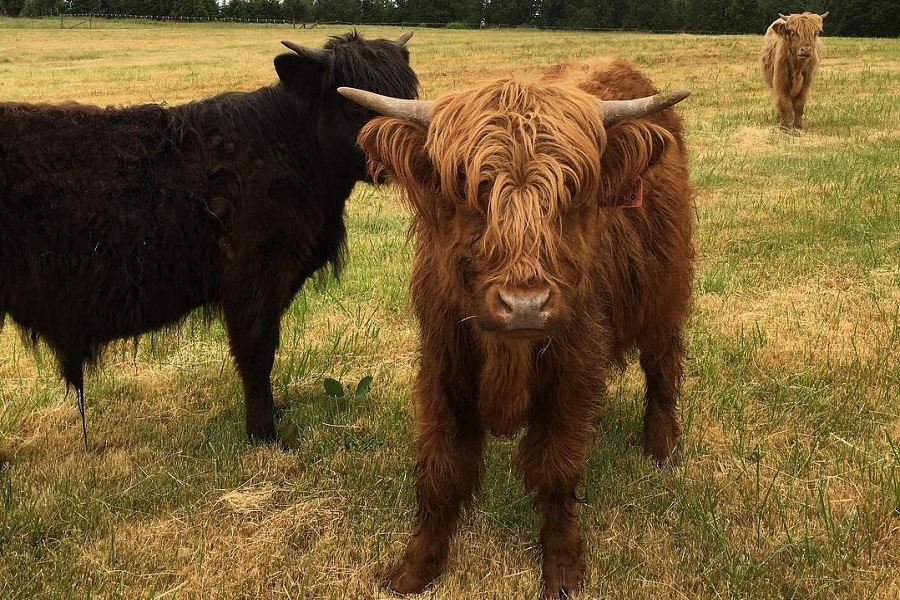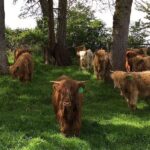COVID-19 poses an existential threat to meat producers. By staying small, local ranches could be the answer to an ailing meat business.
On April 1, Rick Martson, owner of Martson Farm in Molalla, had nine refrigerators full of beef destined for market. By the end of the month, he was sold out and already had a long waiting list.
Martson has avoided the downward spiral affecting most meat manufacturers. The price of meat continues to rise as cases of COVID-19 increase worldwide. Loss of production for beef is estimated at around 25% compared to this time last year, according to the Research Triangle Institute. Meat industry employees are nearly twice as likely to contract COVID-19 than the national average. Moist and cold factory conditions are the likeliest culprit for the greater levels of exposure.
More diverse plant-based options are also a source of meat industry woes. Now competitive with meat in terms of price, plant-based protein products have caused more buyers to try vegan flexitarian diets. More than one in seven households now incorporates plant-based protein into their weekly meals schedule, according to research from the Good Food Institute. Most critically, as restaurants close in record numbers, many meat producers have lost critical buyers.

Scottish Highland cattle graze at Martson Farm in Molalla. Credit: Martson Farm
As large meat manufacturers face unprecedented challenges, smaller, sustainability-minded ranchers could have the advantage. By producing a more sustainable, high-quality product, selling to local buyers and offering direct-to-consumer online ordering, smaller ranches are better-equipped to navigate the pitfalls associated with the pandemic.
Martson Farms has had one of its better years during the pandemic. By selling its specialty beef directly to consumers on its website, as well as to a community-supported agriculture distributor and at two farmers markets, the farm has not had to sell meat directly to restaurants.
RELATED STORY: Farm Fresh
“We had a restaurant client in the past, but they are just too fickle.” says Martson. “Whenever a new chef comes in, the first thing they do is let people know who’s in charge and change the menu.”
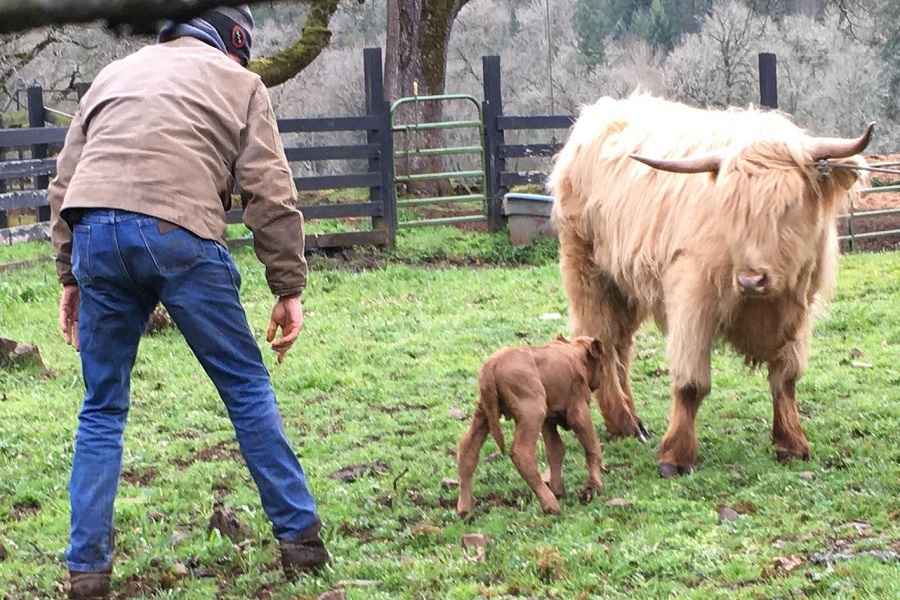
A mother cow gets help with her calf. Credit: Martson Farm
The Scottish Highland cattle are grass-fed, grass-finished, meaning they roam outdoors and have never eaten grain, which is commonly fed to cows at larger farms. (The term “grass-fed” is not regulated and therefore could be used to describe any animal that has eaten grass in its life.)
Keeping the herd small, healthy and outdoors also mitigates the exposure risk. While larger meat procurements can have herds in the thousands, Martson’s herd is under 300. He replaces five to eight cattle per month.
“We have never sold into the big supply chains. We never depended on the big slaughterhouse that had the COVID problem. We started as a high-price meat, but due to COVID, that’s not really the case anymore. Our main market is on lock.”
In addition to losing restaurant buyers, COVID-19 has meant smaller ranches are more price competitive with larger farms. With a smaller operation and fewer shares of meat to sell, ranches like Martson’s could actually see more demand as consumers reevaluate their eating choices.
For small family ranches that do sell into the restaurant market, COVID-19 still presents a problem. “At the beginning of the pandemic it felt like we lost half of our business overnight, but it’s been coming back in little ways as some places adapt and try different models,” says Cory Carman, who operates Carman Ranch with her family in Wallowa. “But this latest shutdown has been painful.”
RELATED STORY: How Sit-Down Restaurants Adapt to Survive.
When a cow is slaughtered, eight different cuts of meat are produced. Some cuts, such as the loin and rib, are sold exclusively to restaurants and steakhouses. Carman says being unable to sell all cuts of beef has been the most difficult aspect of the pandemic.
“People aren’t ordering steaks to go. Unless we are able to sell all our cuts, we can’t move forward. The restaurants really help us move the whole carcass. There aren’t a lot of other places we are able to send those cuts.”
But even with fewer restaurant buyers, Carman Ranch still has a leg up on the competition by staying small. With 40% of Oregon beef and agricultural products being exported, Carman Ranch has been able to weather supply-chain issues.
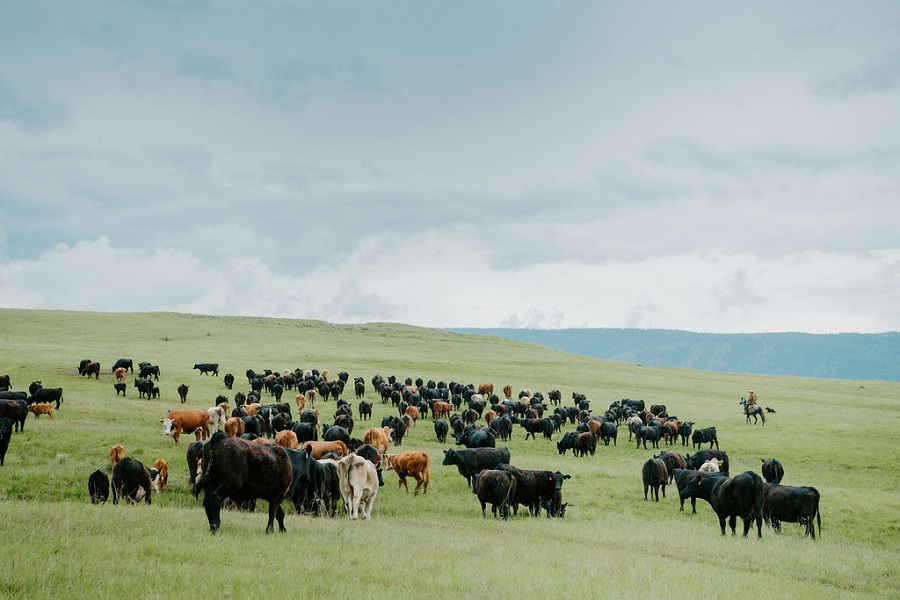
The spring cattle drive at Carman Ranch. Credit: Talia Jean Galvin
By selling to a single distributor, disruptions in international supply lines have not hurt it as much as larger operations.
Carman Ranch produces 100% grass-finished beef. As consumers spend more on grocery products as a result of the pandemic, high-quality, more ethically and sustainably minded products have seen increased sales.
Unlike most factory farms, which produce carbon emissions, Carman’s method of cattle ranching actually traps carbon. She pays attention to where her herd grazes, tramples down land, drinks and drops manure.
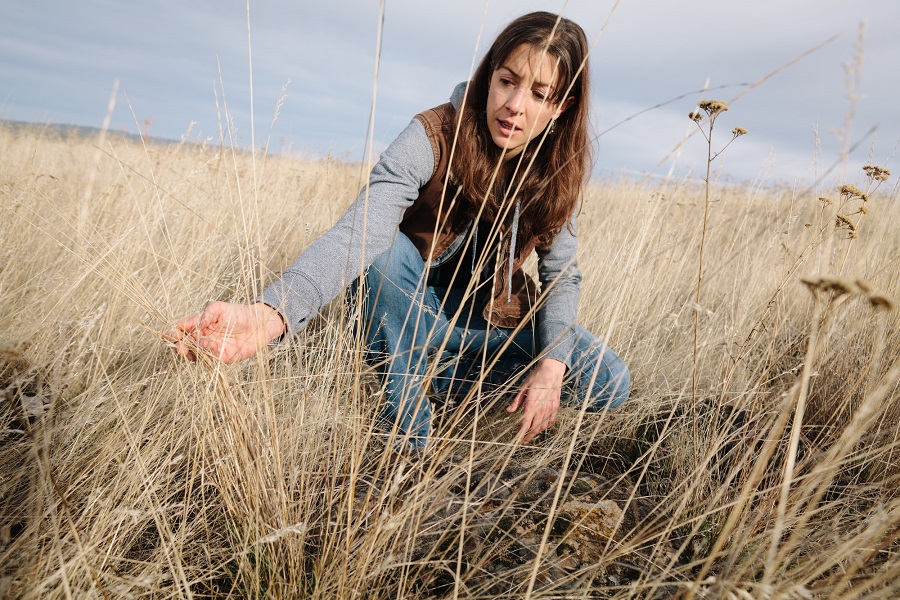
Corey Carman examines trampled terrain at Carman Ranch. Credit: Carman Ranch
This method leads to healthier grasslands, which consume carbon from the atmosphere.
Carman Ranch also has an online ordering system for customers to purchase shares (cuts) of meat directly. While the financial situation of the ranch is still unsteady, new consumer buying habits could mean smaller sustainable ranches that sell less meat at higher prices will be more competitive going forward.
RELATED STORY: COVID-19 Tests Farming Models
“This is really an amazing time to lean in to local and regional food. There are a lot of efforts to reach people where they are with local delivery models,” says Carman.
“I think people need more support to change their buying habits. We have an opportunity to design a better food system.”
To subscribe to Oregon Business, click here.


